Facts about Sacagawea
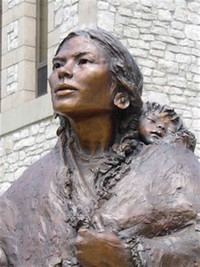
The origins and proper pronunciation of her name has become a great point of controversy and contention among interested historians and her brother Cameahwait's descendants (Sacagawea has no known direct descendants).

Eastman visited many different Native American tribes to interview individuals that might have known or heard of Sacagawea, although not the Agaidika Shoshone (who were confined at Fort Hall Indian Reservation, not at Wind River).

According to Bonnie "Spirit Wind-Walker" Butterfield, historical documents suggest Sacagawea died in 1812.
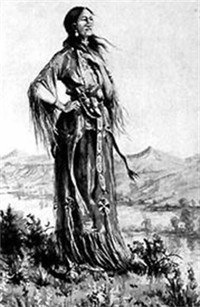
The corps commanders, who praised her quick action on this occasion, would name the Sacagawea River in her honor.
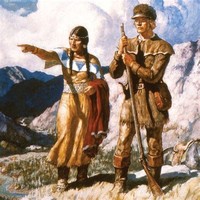
Charbonneau and Sacagawea spent three years among the Hidatsa after the expedition, before accepting William Clark's invitation to settle in St. Louis, Missouri in 1809.

In 1925, Dr. Charles Eastman, a Dakota Sioux physician, was hired by the Bureau of Indian Affairs to locate Sacagawea's remains.

Two different accounts survive of Charbonneau's acquisition of Sacagawea: he either purchased both wives from the Hidatsa, or he won Sacagawea while gambling.
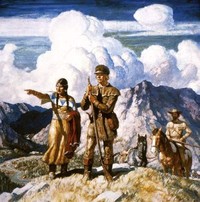
Sacagawea gave birth to a daughter, Lisette or Lizette, sometime after 1810.
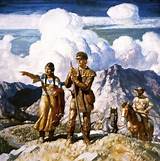
The last recorded document citing Sacagawea's existence appears in William Clark's original notes written between 1825-1826.

Sacagawea was born to the Agaidika ("Salmon Eater") tribe of Shoshone between Kenney Creek and Agency Creek, near what is now the city of Tendoy in Lemhi County, Idaho.

Sacagawea was pregnant with her first child when the Corps of Discovery arrived near the Hidatsa villages to spend the winter of 1804-1805.

Contrary to a common romantic view, Sacagawea did not "guide Lewis and Clark across the continent."

Sacagawea also instructed Lewis on which plants were edible/useful to the party, translated when they met the Shoshone (the original purpose for which she was brought along), and served as a passive goodwill ambassador.

Reliable historical information about Sacagawea is extremely limited and no contemporary portraits of her exist.
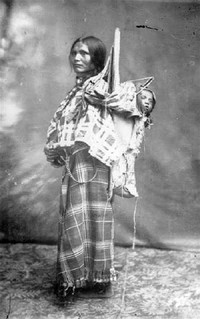
At the age of about 15, Sacagawea was taken as a wife by the French trapper Toussaint Charbonneau, who had also taken another young Shoshone woman as a wife.
Six years after the expedition, Sacagawea gave birth to a daughter, Lisette. On December 22, 1812, the Shoshone woman died at age 25 due to what later medical researchers believed was a serious illness she had suffered most of her adult life.
So why is Sacagawea an important American to know? She was instrumental in the Lewis & Clark Expedition as a guide as they explored the western lands of the United States. Her presence as a woman helped dispel notions to the Native tribes that they were coming to conquer and confirmed the peacefulness of their mission.Nov 15, 2012
Sacagawea was pregnant with her first child when the Corps of Discovery arrived near the Hidatsa villages to spend the winter of 1804–05. Captains Meriwether Lewis and William Clark built Fort Mandan. ... Charbonneau and Sacagawea moved into the expedition's fort a week later.
Sacagawea was a Shoshone Indian and she became famous as a guide and translator on the Lewis and Clark expedition. Sacagawea was the only woman on the expedition, and she helped men by teaching them about the land she knew and translating their words to the Indians.
It certainly was not the Sacagawea Expedition; she did not guide Captains Lewis and Clark all the way to the Pacific Ocean. But she did know some of the geography they passed through, and she did interpret for them when they came across Shoshone-speaking Indians.
IMA Hero: Sacagawea HH. Sacagawea was a valuable member of the Lewis and Clark Expedition. As a teenager, she served the Expedition as interpreter, diplomat, and peace symbol. She did all this while carrying her infant son on her back.
Sacagawea was a Shoshone woman who assisted explorers Lewis and Clark as an interpreter and guide on their exploration of the west. Sacagawea grew up near the Rocky Mountains in land that is today in the state of Idaho. She was part of the Shoshone tribe where her dad was the chief.
Sacagawea, the daughter of a Shoshone chief, was born circa 1788 in Lemhi County, Idaho. At around age 12, she was captured by an enemy tribe and sold to a French-Canadian trapper who made her his wife. In November 1804, she was invited to join the Lewis and Clark expedition as a Shoshone interpreter.Jan 1, 2018

